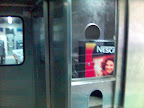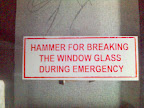(...Continued from Part II)The following graphic depicts a rough time-line. Most of the handsets like the Motorola T720 and the Nokia 7650 are now extinct.

A notable and notorious handset as far as mobile gaming is concerned was the
N-Gage and the N-Gage QD from the Nokia stable. Though visionary in its purpose, it failed in its execution at being a mass market gaming device which could also make phone calls. The take-away from its life was the fact that until the technology so matures, mobile phones are not a hard-core gamer's first port of call. They will always have their PS3s for that.
However, what is notable is the progress made in handset technology over these few years (you may note that a major part of this whole 'history' I am talking about has unraveled in just about half a decade! The growth IS that frantic and this means that the cool phone that I carry today will be tomorrow's junk. This rapid evolution can be tracked using the following attributes which are relevant from a developer's perspective.
a. Screen resolutionThe following representation should give you a good idea:
...2001...
100 x 80
...2002...
128 x 128
...2004...
176 x 220
...2005...
240 x 320
...2007...
480 x 320, 160 dpi - The
iPhoneUndoubtedly the most used and abused parts of most erstwhile digital devices. More so for phones used as gaming devices.
......2001...
Number keys only.
Other keys did not exist except for make / break call ones.
Even if other keys existed, their use inside apps was undefined and unintended.
...2002...
Standard layouts.
Soft-keys defined.
4-way simple joysticks incorporated and used in menus as well as simple games.
...2003...
Additional game specific keys prominent.
...2005...
Six+ way joysticks.
Simultaneous multiple keypress detection.
....
Other innovations in human interface including screen-touch and camera motion detection.
c. Processing power...2001...
Very slow, inefficient processors, primarily intended to feed text only screens and very simple computational needs.
...2003...
Playable frame-rates for arcade style games. Reasonable number crunching.
...2004...
Good frame-rates, even 3D gets introduced, advanced screen rendering algorithms.
.....
The lines between personal computers and personal mobile phones is blurring further and further. Some devices as capable as earlier PCs and some like the iPhone carving a niche for the way in which the UI and power has been designed to give a superior user interface.
d. MemoryAll the graphics, sound effects and rendering code need space - the more the better. More space translates into a better ability to pack in richer textures, detailed sprites and backgrounds with a good color-depth and range. Also, games gobble a good amount of working memory - the stack and the heap to give a better gaming experience. There is a lot of data associated with any game instance and these must be buffered for quick access. In simple terms abundant heap and stack space translates into a smoother and richer game-play.
...2001...
32 to 64KB jar size
200KB heap
...2004....
200KB jar size
512KB heap
...
Jar size in Mega Bytes
Introduction of Virtual memory...?
This pretty much sums up the evolutionary pattern being followed by mobile handsets. I'm sure as technology progresses, these parameters will be redundant - but until then and even beyond, they're welcome to stay on my journal ;).
In the next piece I intend to list out a few notable games that can be called milestones in the handsets' journey of evolution. Till then - adios!

















